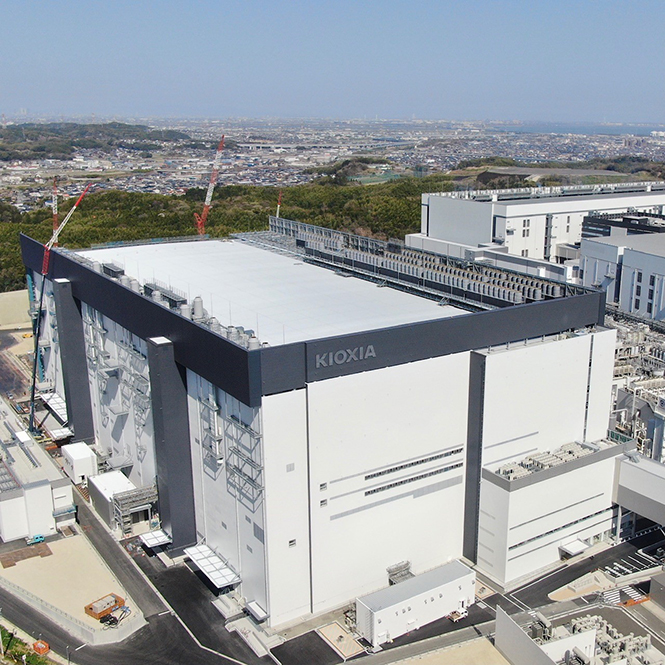Japanese Government Invests $680 Million in Kioxia, WD Fab
Kioxia and Western Digital said that their joint venture Fab 7 3D NAND production facility at YokkaichiOperations in Japan would receive up to ¥92.9 billion ($680 million) subsidy from the Japanese government. The subsidy is part of a unique government program designed to boost the semiconductor production industry in Japan.
Kioxia started to build its Fab 7 facility at Yokkaichi Operations in late 2020. However, the construction of the fab shell is incomplete. Kioxia and its partner Western Digital are equipping the fab with production tools to start manufacturing 112-layer and 162-layer 3D NAND memory this fall. Eventually, the fab will produce 3D flash memory with even more layers.
"We are pleased that the Japanese government recognizes the importance of memory and data storage technologies as they remain critical innovations in the semiconductor industry," said David Goeckeler, CEO of Western Digital. "We look forward to continuing to drive long-term success together with our strategic partner, Kioxia."
While 3D NAND and DRAM memories are crucial for PCs, servers, smartphones, and virtually all types of sophisticated devices we use today, producing both is a financial risk since these are commodity chips. Their prices depend entirely on supply and demand factors. As a result, governments have been reluctant to support DRAM and NAND producers in recent years (if not decades) and allowed companies like Micron and SK Hynix to absorb less successful producers of DRAM and NAND.
Yet it looks like the Japanese government is gradually changing its opinion about 3D NAND production, and for a reason. 3D NAND manufacturing may not be the most profitable business on earth and is prone to cyclic downturns. But large 3D NAND producers like Kioxia and Western Digital help to develop the local semiconductor production industry as they require loads of supplies and hire thousands of engineers to run those fabs.
Once the semiconductor supply chain is in the country (or a region), you can attract producers of other chips, notably contract makers of logic chips like TSMC that prefer to establish new fabs in territories with established supply chains and experienced personnel.
"We appreciate the support of the Japanese government and will continue to produce cutting-edge flash memory which is indispensable for a digital society where cloud services, 5G communications, IoT, AI and automated driving are expanding," said Nobuo Hayasaka, President and CEO of Kioxia. "We are committed to further advancing the semiconductor industry and contributing to the development of the domestic and global economies."
Get Tom's Hardware's best news and in-depth reviews, straight to your inbox.

Anton Shilov is a contributing writer at Tom’s Hardware. Over the past couple of decades, he has covered everything from CPUs and GPUs to supercomputers and from modern process technologies and latest fab tools to high-tech industry trends.
